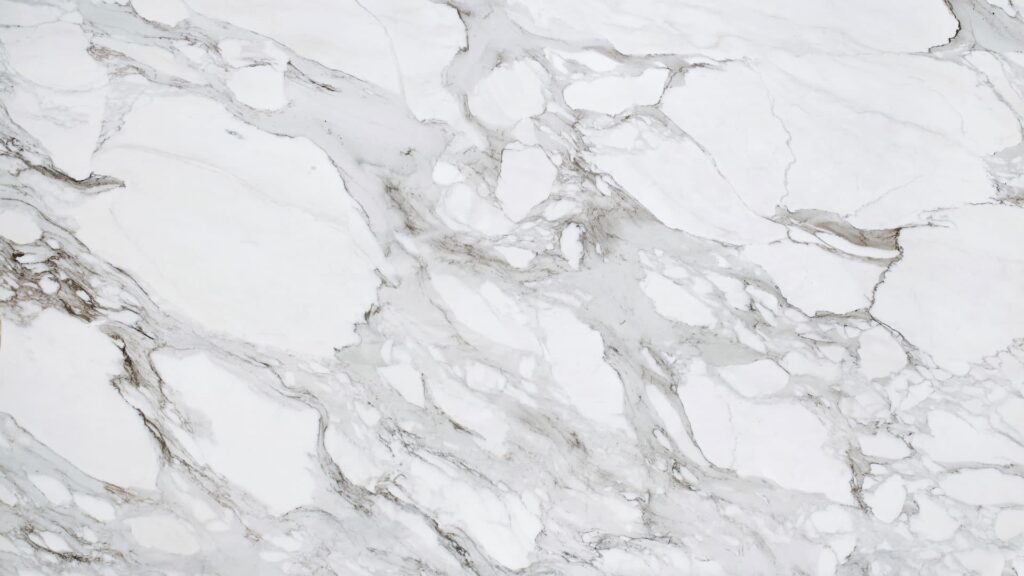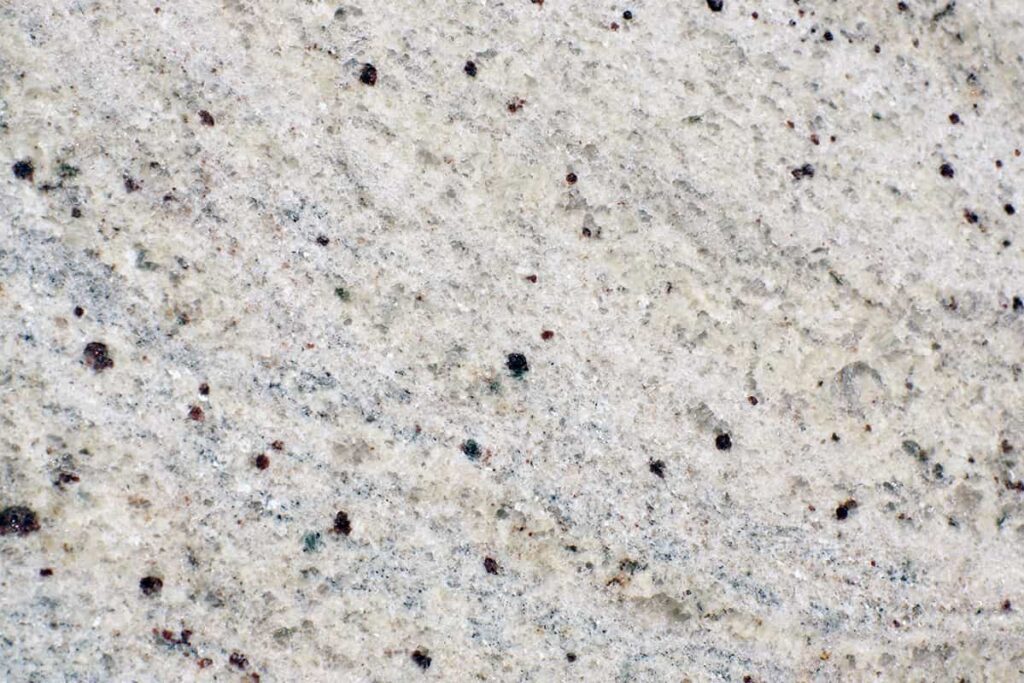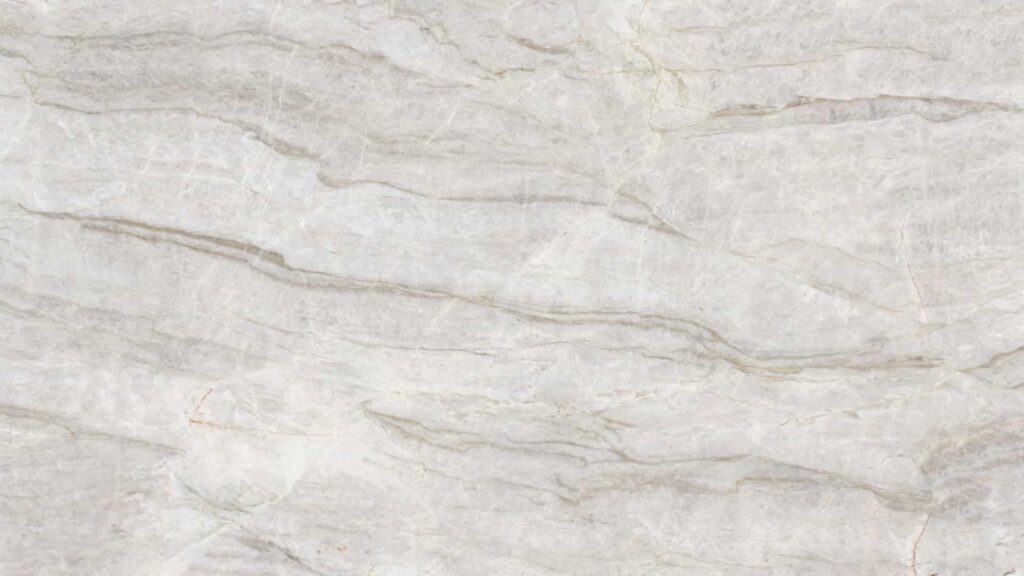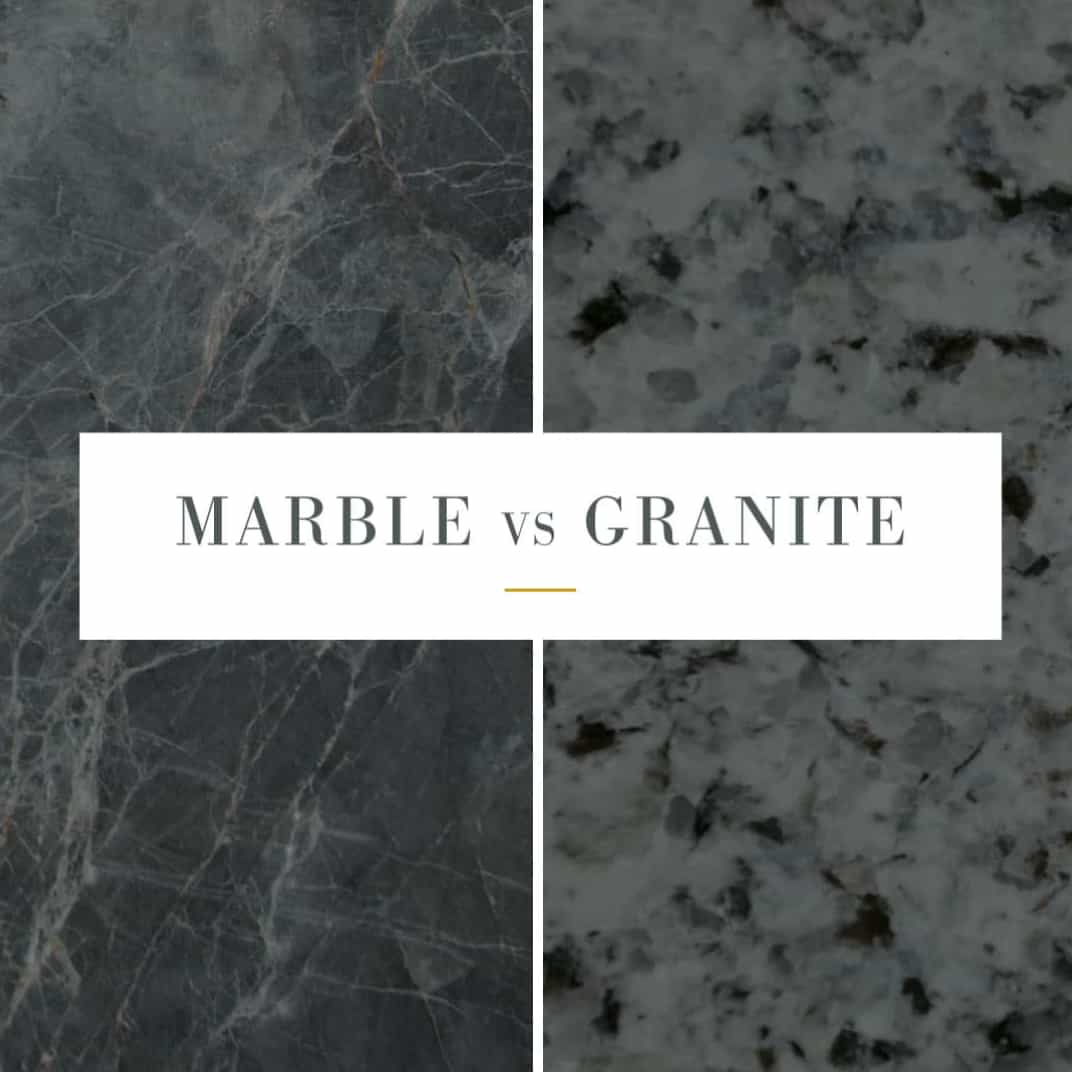How to distinguish marble from granite
The easiest way to understand how to distinguish marble from granite is certainly that of visual impact.
The marble looks like a homogeneous surface, with more or less subtle veins that can vary in chromatic intensity, while the granite (right) can be recognized by the grain composition.
Since marble is a metamorphic rock, that is, born from a process of transformation of its elements due to temperature and pressure, to the eye it appears to us as a predominantly homogeneous surface, crossed by more or less thin veins.
Granite, on the other hand, is an intrusive igneous rock that derives from the crystallization of lava and its texture is characterized by a grain ranging from medium to coarse, with the occasional presence of microcrystals.
In addition, even the names of these two natural stones help us to identify how to distinguish marble from granite: marble derives from the ancient Greek màrmaros which means 'shining stone' while granite derives from the Latin granum, with clear reference to 'wheat' as a small entity.

Comparison between marble and granite: the eye of the expert
One of the fundamental elements to perform a proper comparison between marble and granite is the concept of hardness. Leaving aside the technical definition, hardness can be described as the difficulty that poses the material to cutting, its processing, breaking and the action of external agents.
Thanks to its physical characteristics, marble lends itself very well to the creation of works of art and furnishing elements.
If we make a comparison between marble and granite in this perspective, granite is certainly more resistant as demonstrated by its applications on outdoor floors, very busy public places, bar worktops and kitchens. Marble, on the contrary, is characterized by a lower hardness which, however, allows this material to be more versatile in different processes (brushing, tumbling, antique, etc ...) and propose itself as an irreplaceable partner for the most diverse design projects, artistic artifacts and coatings.
It is important to know that if marble fears external agents and acidic substances but does not present significant problems with oily substances, granite instead is delicate for the latter, which are absorbed by the small interstices present in its crystalline structure.

Natural stones alternative to marble
Marble, thanks to its elegance and beauty, has always been considered the finest and most prestigious choice. In some realizations, however, such as kitchen countertops or bar counters, this option becomes impractical due to the delicacy of the material and the attention required to its maintenance.
But there are alternatives, and the secret lies in getting out of the 'traditional' idea of natural stone and being fascinated by the immense offer that the sector makes available and that can combine the beauty of design with the necessary characteristics, guaranteeing elegant and original results.
An idea, for example, for those looking for the whiteness and shine of white marble, can be the use of granite that in our collection is identified as Taj Mahal. Thanks to its almost imperceptible grain and its delicate veins in shades of gray, this material has a very uniform and brilliant yield, truly similar to marble. Its being a granite, however, makes it robust and resistant to scratches, trampling and external agents.
It must also be said that even within the same category of natural stone we find materials of the same family but with very different characteristics: Moena marble, for example, is a splendid alternative to Statuario marble and is technically more resistant and available at lower prices.
In recent years, great success has also had the Quartzites natural (or soft quartzite) that resemble marbles in texture but which have technical characteristics very similar to granite. In their family there are many proposals, some even very particular as those that recall on various shades of brown and beige the graphics of the bark of the trees (in our collection,Elegant Brown and Sequoia Brown).
The choice is really wide and with good advice you can get superb results, ideal as yield and requirements, without compromise.

Is granite more expensive than marble?
Speaking in absolute terms, the answer to the question of whether granite is more expensive than marble is definitely no. As in all sectors, however, the quotations vary according to different parameters such as the type, the thickness of the slab, the processing and the type of application.
In truth, for marble and granite as for all natural stones, the correct way to develop a thought is to start from the project and the yield that natural stone must have inside. Once this and the use of the material have been considered, we must then range within the infinite proposal of materials available today and in which there is certainly the right answer in terms of design, use and cost. The right question to ask, therefore, is not "Is granite more expensive than marble?" but "Which natural stone will meet all my needs? ".
